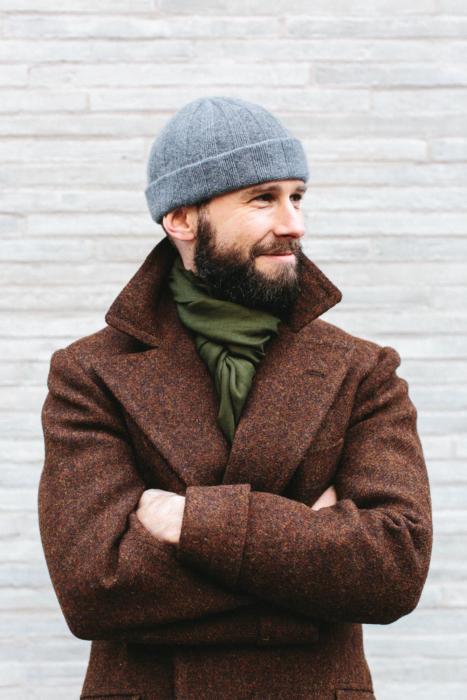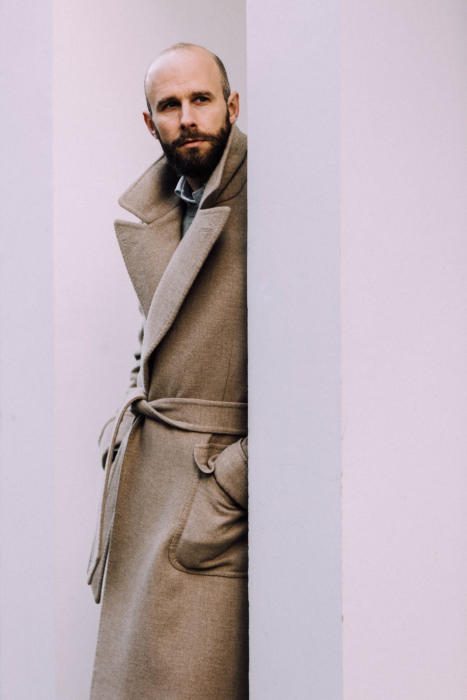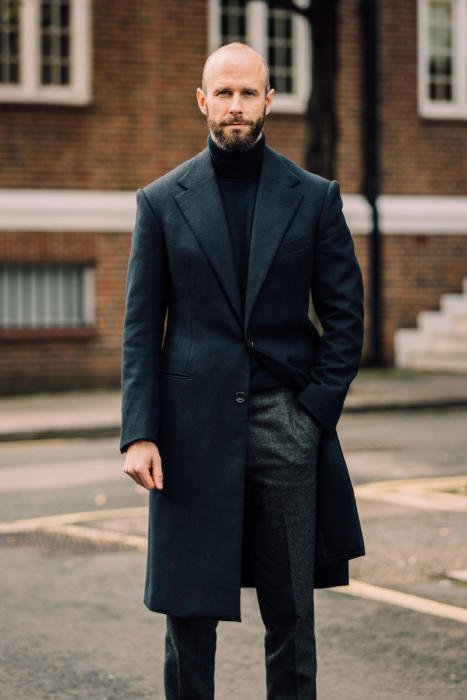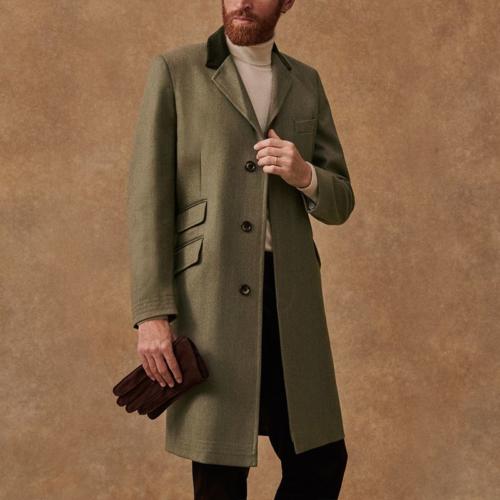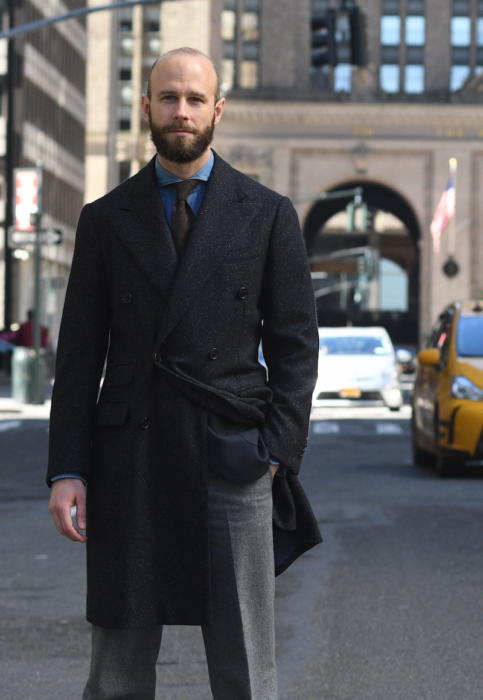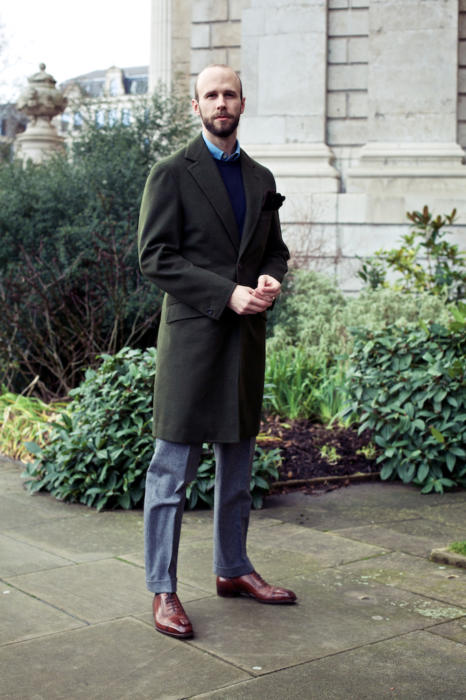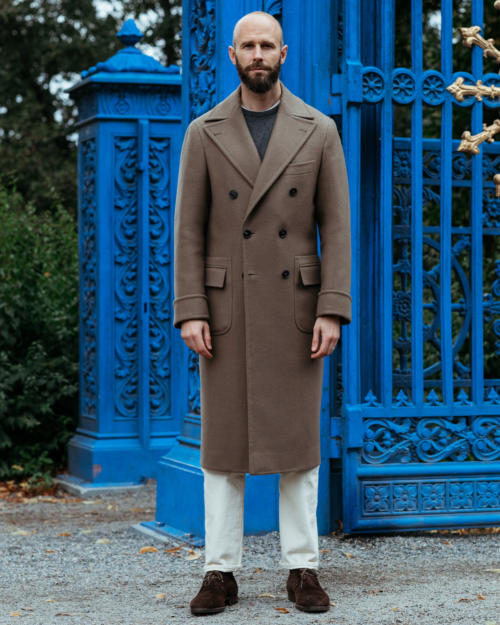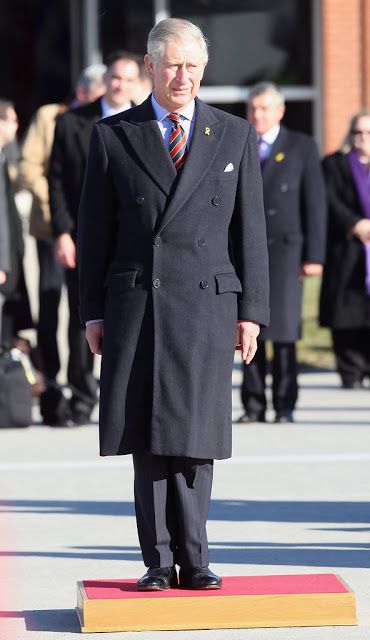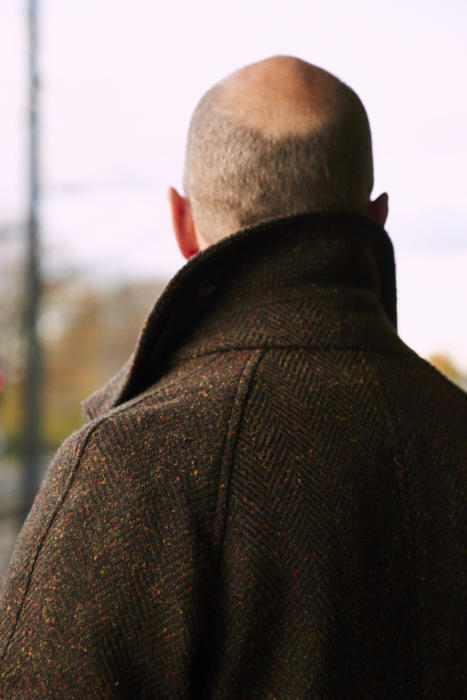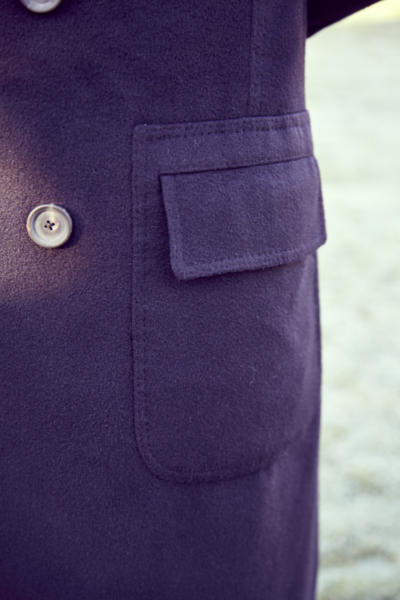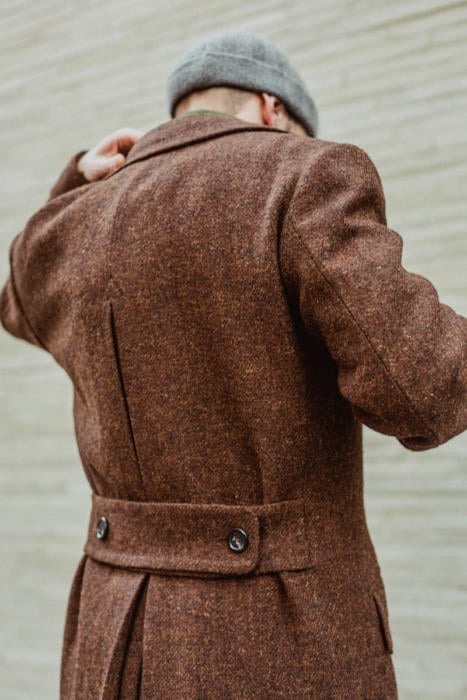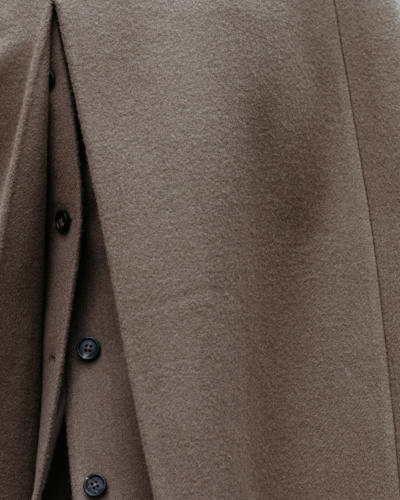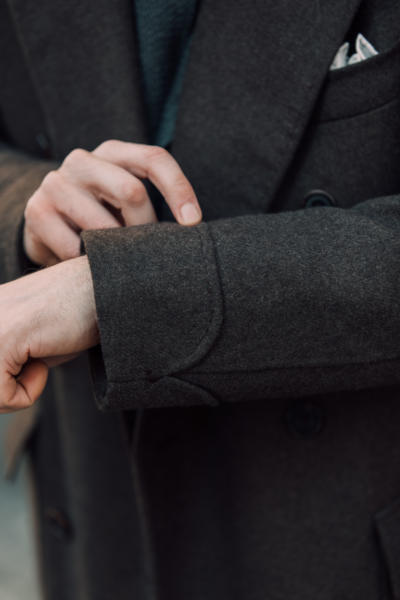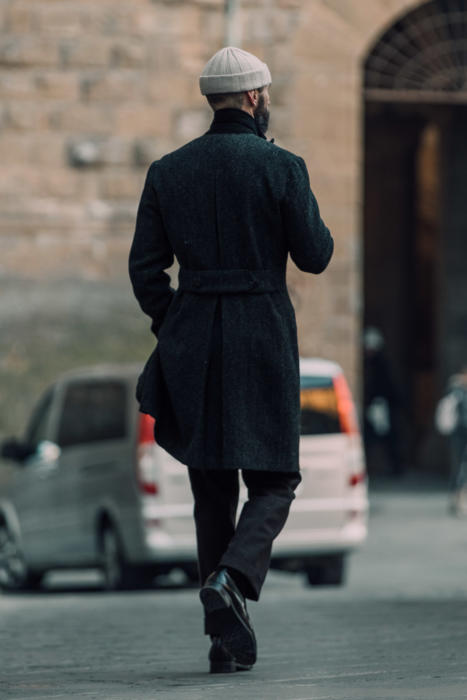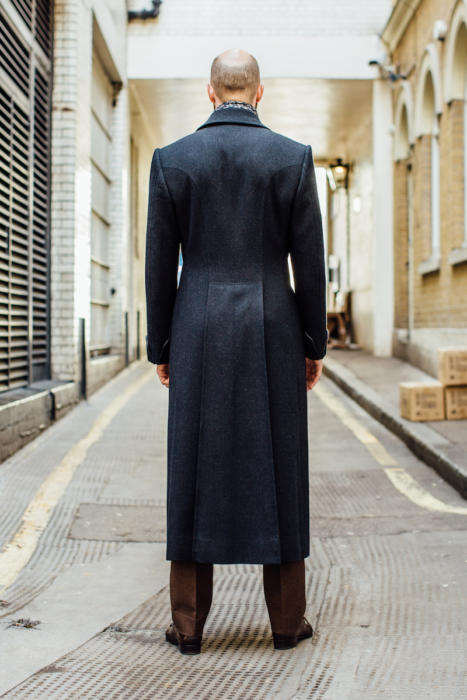Anybody thinking about shopping for or commissioning a brand new coat might be interested by kinds proper now – what they’re, what they’re referred to as, what their relative benefits are.
On this piece I’m going to set out the essential choices, and my temporary opinions on them. On formality, heat, and different elements of practicality.
It would deal with tailor-made coats – so nothing extra informal like a trench coat, blouson or duffle. These are normally greatest purchased ready-to-wear (although a future article on an outerwear capsule will embody them).
And it’ll not go into element about material. There’s a way more complete article on that right here.
The very first thing to say about names of coats is, don’t assume everybody makes use of the identical ones, or certainly has heard of the names utilized in on-line discussions.
Completely different nations have totally different cultural references, and therefore totally different names. Tailors know the kinds they make and the kinds they have been taught. Their body of reference is usually no wider than that.
Names are helpful, as a result of they put a label on the picture you will have in your head. They accumulate collectively a bunch of traits beneath a single time period.
However don’t assume that everybody is aware of what a guard’s coat is. For those who stride right into a tailor and request a paletot, you is perhaps met with appears to be like of confusion, even bemusement.
So, I like to recommend specializing in the constituent elements of those kinds. Break down what you need into its traits: single or double breasted, peak or notch lapel, size and material and buttons and so forth.
This text might be organised alongside these traces, with the kinds being talked about extra as examples.
Size: Overcoat or topcoat
The primary determination with an overcoat is what climate you need it for. How chilly does it get the place you reside, and when throughout the yr do you wish to put on it?
This impacts a number of issues, together with material and double vs single-breasted. However the very first thing it determines is size. A shorter coat is – all different issues being equal – chillier than an extended coat. Because of this, coats supposed for hotter climate are historically shorter – normally on or simply above the knee.
A coat of this sort is normally known as a topcoat. It’s normally in a lighter weight material, however might be single or double breasted. The instance above was made by Michael Browne.
Different sorts of topcoat embody a covert coat (above), which is outlined by the covert material it’s created from – a tightly woven twill that can also be nice for trousers (although it may be slightly shiny, so pretty formal).
This material makes the covert coat very hardy, reminiscent of its nation origins. It’s typically in colors like fawn and olive too, and has a number of traces of sewing on the cuffs and hem, supposed to forestall rips getting out of hand.
The coat typically has a fly entrance, and typically has velvet on the collar (one other sensible addition – because the velvet might simply get replaced).
Double breasted or single breasted
The second option to make is whether or not the coat might be single or double-breasted.
Personally, I’m an enormous fan of double-breasted coats. It is because DB tailoring is so flattering and trendy (notably if made bespoke) but a coat is likely one of the final methods it may be worn. Anybody can put on a DB coat to the workplace; not everybody can put on a DB go well with.
A double-breasted coat will all the time be slightly smarter and extra formal than a single, however not as a lot as with a jacket. It would even be hotter, and simpler so as to add type particulars to (akin to a belt or cuffs).
It’s typically thought {that a} double-breasted coat should be longer as nicely – an overcoat moderately than a topcoat. However that isn’t essentially the case, as you possibly can see with my DB topcoat from Ettore de Cesare, above.
Peak lapel or notch lapel
As with a jacket, a double-breasted coat will all the time have a peak lapel. However a single-breasted coat can have a peak or a notch – and it’s maybe extra frequent to see a peak lapel on an SB coat than on a jacket.
The one actual issue to think about in that selection is {that a} peak lapel is extra formal and slightly extra rakish. If you would like one thing extra stylised, a peak lapel is an efficient solution to do it. If not, a notch needs to be the default.
And a notch might be roughly stylised too – evaluate the Vergallo coat on me above, with the Michael Browne one additional up.
There may be additionally an necessary distinction between peaked lapels on a DB coat: many kinds have a peak which factors horizontally throughout the physique, if not barely downwards.
(You may argue that this isn’t actually a peaked lapel, however it does have the height’s lack of area – or notch – between the lapel and collar. So it most likely belongs in the identical group.)
The explanation this lapel is extra horizontal, was initially in order that it could possibly be fixed throughout the chest, making a double layer of material in the identical method as a pea coat. And even when the coat just isn’t minimize to do that, the lapel does enable the collar to be worn up in opposition to the wind, with out the peaks poking the wearer within the neck.
The very best-known type that includes this lapel might be the Ulster coat – an instance of which I’m sporting within the picture above, made by Sartoria Ciardi. Initially a Victorian coat with a cape, typically in informal wools like tweed, the Ulster has come to imply this type of DB overcoat, typically with a belt and turn-back cuffs.
Double-breasted coats with a extra commonplace, upward-pointing peaked lapel are given numerous names, together with a guard’s coat (above) and a paletot. Personally I don’t assume the kinds are that related, given how divorced they’re from their origins, and the truth that a important distinction was how fitted they have been – which is never an element at this time.
Nonetheless, what all of them have in frequent is that they’re extra formal, and because of this are inclined to don’t have any belt on the again, flapped pockets, a 6×2 button association (so the highest row doesn’t fasten) and no cuffs on the sleeves.
It’s this formality that needs to be your first consideration when designing a coat. It might be incongruous to have a sensible, peak-lapel coat from the entrance that was cinched and belted on the again, it doesn’t matter what the unique kinds may need been referred to as.
Shoulders
This can be a temporary part, necessitated by the existence of the raglan coat.
Whereas all different overcoats can have an everyday, or set-in, sleeve, a raglan sleeve runs proper as much as the collar, with no shoulder part between the 2. An instance is proven above.
It shouldn’t shock you to know that the raglan is extra informal, and suited to coats which are worn with simply knitwear, in addition to tailoring. It’s additionally a mode that there’s much less level having made by a tailor – as a result of its lack of form means the tailor has much less so as to add, and since it’s surprisingly difficult to do.
There are additionally variations, akin to a half raglan (which appears to be like prefer it has a set-in sleeve on the entrance) and designs with a slimmer sleeve on the high, virtually like a saddle shoulder on knitwear.
Pockets
Now we get into design particulars. Pockets are an apparent one, and there are three primary choices: flapped (straight or slanted), patch (with flap or not) and postbox (a mixture of flap and patch).
Flaps are smarter and go along with smarter coats; patches are extra informal and go along with extra informal coats. A postbox pocket (pictured above) is fairly cumbersome and so belongs within the informal class.
I moderately like postbox pockets on informal coats akin to an Ulster, as a result of a patch can appear moderately too easy for one thing made bespoke. However I’d have flaps on most good coats.
Ticket pockets on coats look slightly misplaced to me, although they’re moderately sensible. And though some depart them off, I’d normally have a welted breast pocket on an overcoat. It’s very helpful for gloves.
Belts
It’s typically stated that the again of an overcoat is the place the horny stuff goes on. I believe the entrance ought to look good too, however there are definitely extra design choices on the again.
The primary is the belt. A sensible overcoat, as talked about, should not have any belt in any respect on the waist. However most others have a half belt: one or two strips of material, both stitched to the fabric or left free, and if free then fixed with buttons.
The type of belt just isn’t an enormous determination – it’s unlikely to look misplaced whichever you select. So decide the one you want probably the most, and should you’re not sure go along with the basic ‘Martingale’ of two strips and two buttons (proven above). It’s additionally not a tough factor to vary later.
There are methods for this belt to be useful, with further buttons and buttonholes, however having completed that a few instances on my coats, I not request it. I simply discover that little cinching doesn’t make a large enough distinction to what I can match beneath.
Pleats and vents
Above and beneath that belt there’ll typically be pleats, as a solution to put extra room into the again and seat, and due to this fact offer you larger freedom of motion.
A field pleat in the midst of the again is enticing, as are pleats both aspect of it – radiating from the belt – that appear like precise folds made by the tightness of the belt (although they’ll most likely truly be sewn down).
Once more, as with belts, there’s minimal distinction when it comes to formality between these choices, however I’d say that if unsure, go for the only type that you just like. An overcoat is an enormous piece of tailoring to get mistaken (as I’ve discovered to my value previously).
On the backside of the coat, there’ll then normally be a single vent that runs all the way in which down, making it simpler to stroll. There are alternative ways during which the coat might be pleated right here, however the main selection is whether or not to have buttons enabling the vent to to be fixed, or not. Usually, a sensible coat wouldn’t have buttons, and a extra informal one might.
Cuffs and swelled edges
Different design parts on coats embody turn-back cuffs on the ends of the sleeves. These would appear to be an off-the-cuff selection, however have been included on a surprisingly massive variety of formal tailoring kinds over time, together with night put on.
Personally, I wouldn’t have turn-back cuffs on a very good coat although – nicer to depart it clear.
The identical goes for swelled edges, the place there’s a row of sewing a couple of millimetres again from the sting of the coat. This may be an aesthetic element, although it was additionally seen as sensible when it comes to stopping fraying or rips operating too far.
As you’d count on, this can be a extra informal element, and most frequently seen on Ulster coats or Polo coats. The latter is an attention-grabbing case when it comes to type definitions, given what number of totally different variations there have been over time. Ultimately, it was a garment for a goal (maintaining heat after sport) moderately than an outlined design.
This listing, for me, is the easiest way to interrupt down the kinds of a tailor-made overcoat, moderately than moving into paddock coats, chesterfields, nice coats and surtouts.
Such references might be helpful, however they’re simply as prone to get in the way in which.
Typically they will make a superb start line, moderately than a clear definition. Edward Sexton and I referred to the coat we made in 2016 (beneath) as an ideal coat, for instance, due to its supposed size and heat. However the pleats and seams on the again wouldn’t have been seen on any conventional nice coat.
Hopefully operating by way of all these sections will assist outline precisely what you need, in an analogous means.
(I also can do extra detailed posts sooner or later, if folks need. Eg illustrations of all of the pocket choices, or pleat choices within the again. There is not actually room for that right here.)


